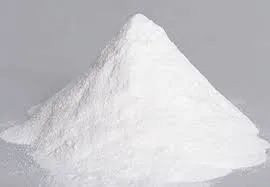
Nov . 27, 2024 11:02 Back to list
Exploring the Uses and Benefits of Liquid Thickening Agents in Various Applications
Liquid Thickeners Enhancing Texture and Consistency in Culinary Applications
When it comes to cooking and food preparation, texture plays an essential role in the overall experience of a dish. One of the most effective ways to modify the texture of a liquid is by using thickeners. Liquid thickeners are ingredients that increase the viscosity of sauces, soups, gravies, and beverages without changing their essential flavors. This article will explore the various types of liquid thickeners, their applications, and tips on how to use them effectively in the kitchen.
Types of Liquid Thickeners
Liquid thickeners can be classified broadly into natural and synthetic categories. Natural thickeners are derived from plant or animal sources, while synthetic thickeners are chemically produced to serve specific purposes.
1. Natural Thickeners - Cornstarch One of the most widely used thickening agents, cornstarch is a carbohydrate extracted from corn. It is commonly used in sauces, puddings, and soups. When mixed with cold liquid and then heated, cornstarch gelatinizes, thickening the mixture effectively. - Arrowroot This starchy substance is extracted from arrowroot plants and is known for creating a glossy finish in sauces. Arrowroot is a good choice for thickening sauces that will be frozen, as it holds up better than cornstarch when frozen and reheated. - Tapioca Derived from cassava root, tapioca is another versatile thickener suitable for both sweet and savory dishes. It is particularly popular in pie fillings and can give dishes a chewy texture. - Flour All-purpose flour can be used as a thickening agent, usually in the form of a roux (flour cooked with fat) or a slurry (flour mixed with water). It works well in gravies and creamy sauces.
2. Synthetic Thickeners - Xanthan Gum A popular ingredient in gluten-free cooking, xanthan gum is produced through the fermentation of sugars. It’s often used in salad dressings and sauces to provide a thick and stable texture without altering flavor. - Guar Gum Sourced from guar beans, this thickener is frequently used in ice creams and baked goods since it helps retain moisture and create a desirable mouthfeel. - Psyllium Husk Known for its health benefits, psyllium husk not only thickens but also adds fiber to recipes. It’s commonly used in gluten-free baking to improve texture and moisture retention.
Applications in Culinary Practices
liquid thickener

Liquid thickeners find numerous applications in both home and commercial kitchens. Their ability to enhance texture makes them invaluable in various culinary practices
- Soups and Sauces Thickeners like cornstarch, flour, and arrowroot are essential in creating creamy, velvety soups and robust sauces. They help to bind the ingredients together and prevent separation. - Desserts Puddings, custards, and pie fillings often rely on thickeners such as cornstarch and tapioca to achieve the desired consistency. The right thickener can enhance the overall texture and mouthfeel of desserts, making them more enjoyable. - Beverages Thickeners can also be used in beverages, especially those intended for individuals with swallowing difficulties. Products designed for this purpose, like xanthan gum, create a smoother texture that makes drinking easier and safer.
Tips for Effective Use
To achieve the best results with liquid thickeners, consider the following tips
1. Mixing Always mix dry thickeners with a small amount of cold liquid before adding them to a hot mixture. This prevents clumping and ensures a smooth consistency. 2. Heat Gradually Most thickeners require heat to activate their thickening properties. Heating the mixture gradually allows for better control over the desired thickness. 3. Quantity Matters Start with a small amount and gradually increase. It's easier to add more thickener than to correct a dish that has been over-thickened. 4. Sauce Consistency Keep in mind that sauces will continue to thicken slightly as they cool, so aim for a slightly thinner consistency when finishing your dish.
Conclusion
Liquid thickeners are essential components in culinary techniques, providing the ability to enhance and modify textures without compromising flavors. Whether you choose natural or synthetic options, understanding how to use these thickeners effectively can elevate your cooking and baking efforts, allowing you to create dishes that are not only visually appealing but also delightful in taste and texture. Whether you’re a professional chef or a home cook, mastering the art of thickening can open up new possibilities in the kitchen.
-
HPMC for Tile Adhesive: Superior Bonding & Workability
NewsAug.30,2025
-
Premium Cellulose Ether: Effective Liquid Thickener Solutions
NewsAug.29,2025
-
HPMC for Tile Adhesive: Enhanced Bonding & Workability
NewsAug.28,2025
-
tile-bonding-additives-for-stronger-bonds
NewsAug.22,2025
-
construction-grade-rdp-for-wholesale-needs
NewsAug.22,2025
-
trusted-hec-supplier
NewsAug.22,2025







